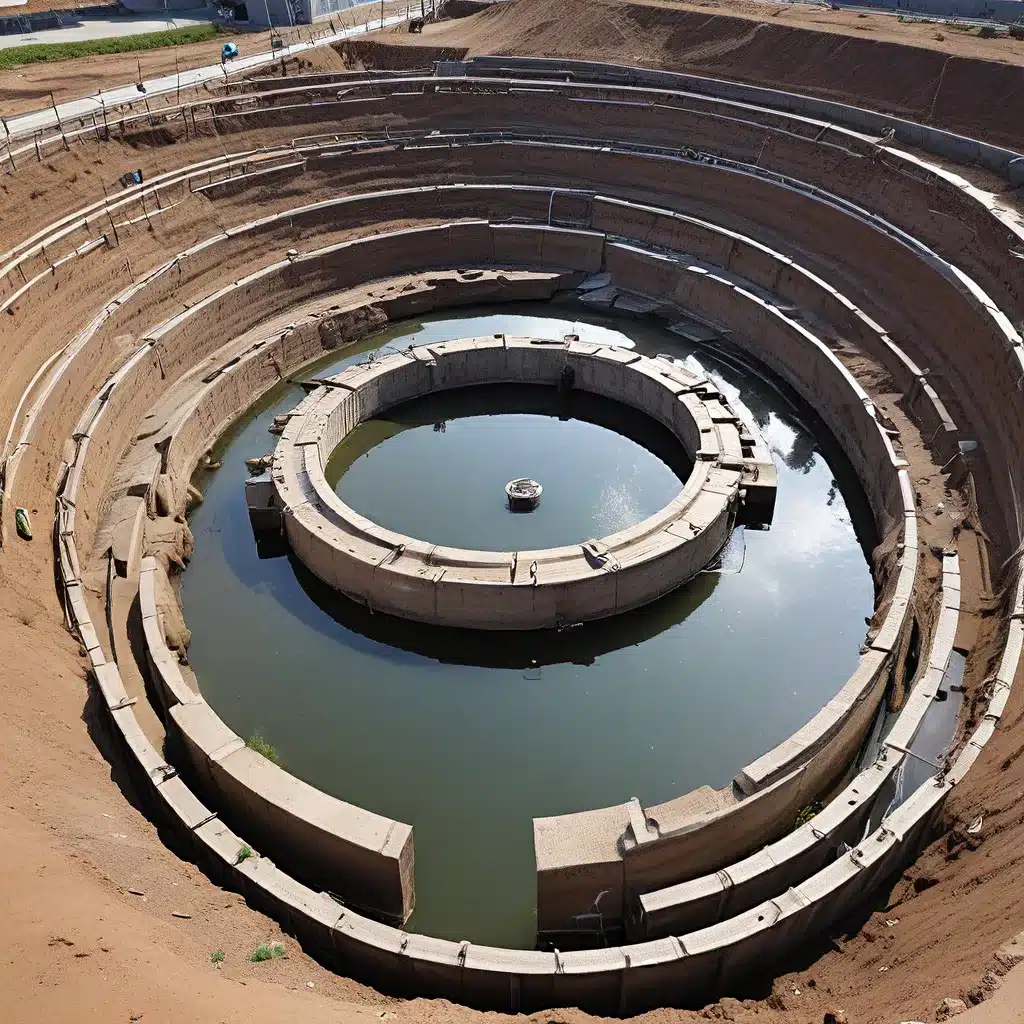
Breaking Free from the Linear Drain
Have you ever stopped to consider what happens to the water that swirls down your drain? For most of us, the answer is simple – it disappears, flushed away into the abyss of outdated water infrastructure. But what if I told you that this “wastewater” is actually a valuable resource, just waiting to be tapped into?
The World Bank estimates that urban water demand is expected to rise by a staggering 30% over the next few decades. As our cities continue to grow, the strain on our water resources will only intensify. And with climate change further exacerbating these water woes, we’re facing a crisis of epic proportions.
But what if I told you there’s a solution hiding in plain sight? Welcome to the world of circular water systems – where wastewater is no longer seen as waste, but as a valuable resource to be reclaimed, recycled, and reused.
Flushing Away the Old, Embracing the New
You see, for far too long, we’ve been stuck in a linear “take-make-waste” mentality when it comes to water. We draw from our limited freshwater sources, use it once, and then discard it, often polluting our waterways in the process. But the circular economy offers a revolutionary new approach.
Imagine a world where wastewater is transformed into a treasure trove of resources – clean water for irrigation, energy for powering our cities, and even nutrients for growing our food. It’s a game-changing shift that not only conserves our precious water supplies, but also reduces our environmental footprint and creates new revenue streams.
And the best part? The World Bank says that this transition to circular water systems isn’t just reserved for the wealthy nations – even developing countries can reap the benefits.
Flushing Out the Savings
Let’s take a closer look at some real-world examples that are already making waves in the world of circular water. In India, the Chennai Metropolitan Water Supply and Sewerage Board (CMWSSB) has been on a mission to transform their wastewater into a valuable resource.
Since 2005, CMWSSB has been investing in projects to treat and reuse their wastewater. And the payoff has been impressive – they’ve been able to sell the treated water to industrial users, covering all their operating and maintenance costs in less than five years. But that’s not all – they’ve also retrofitted their wastewater treatment plants to generate their own energy, meeting over 50% of their energy needs and saving a bundle on those pesky electricity bills.
And it’s not just India leading the charge. The World Bank has highlighted similar success stories from Indonesia, Cambodia, Uruguay, China, and Senegal, where utilities are embracing circular economy principles to recover resources, create new revenue streams, and build more resilient water systems.
Navigating the Circular Water Revolution
But transitioning to a circular water system isn’t as simple as flipping a switch. It requires a fundamental shift in the way we think about water management, from the treatment processes to the underlying infrastructure.
That’s where the World Bank’s “Water in Circular Economy and Resilience” (WICER) framework comes into play. This comprehensive approach provides a roadmap for utilities and policymakers to design and implement circular water systems that deliver resilient and inclusive services, design out waste and pollution, and preserve our precious natural water resources.
And the benefits extend far beyond just water conservation. By embracing circular economy principles, the water sector can also play a pivotal role in reducing greenhouse gas emissions, supporting the fight against climate change. It’s a win-win-win scenario that’s hard to ignore.
Diving into the Future of Water
So, what does the future of water hold? Well, if the examples we’ve seen are any indication, it’s a future where wastewater is no longer a burden, but a valuable resource to be harnessed. A future where utilities can not only meet the growing water demands of our cities, but also create new revenue streams, reduce their environmental impact, and build resilience against the unpredictable challenges of climate change.
And the best part? This circular water revolution is well within our grasp. The World Bank is already working with countries around the globe to embrace these innovative solutions, and more and more utilities are jumping on board every day.
So, the next time you hear that familiar swirl of water disappearing down the drain, I want you to imagine all the amazing possibilities it holds. Because in the world of circular water systems, there’s no such thing as waste – just untapped potential, waiting to be unlocked.


